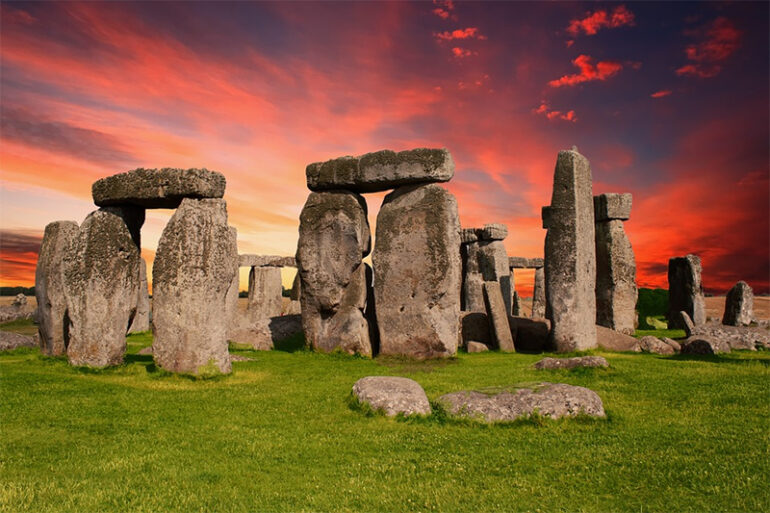The reason and purpose of why Stonehenge was built is still unknown up until now. As such, its existence has become an enigma to historians and archaeologists alike. This intriguing formation can be found on Salisbury Plain, England, where people flock to visit the site and visit Stonehenge. Adding to the appeal of Stonehenge, it is recognized as one of the most complex and sophisticated prehistoric stone circles. Furthermore, Stonehenge was officially recognized as a heritage site by UNESCO World in 1986. The name Stonehenge was said to get its name from the Saxon word “stan-hangen” which translates to “stone hanging”.
Theories
During the 17th century, John Aubrey, an English antiquarian, believed Stonehenge to be a Druid temple. Much later, during the 18th century, William Stukeley, an archaeologist, shared the same sentiments with Aubrey. However, upon closer examination of recent studies, there is reason to believe that what Aubrey and Stukeley initially thought to be true is wrong because Stonehenge is calculated to have come about 2,000 years before the Druids. Another theory for Stonehenge was proposed by an astronomer named Gerald Hawkins, saying that Stonehenge may have acted some technology to predict lunar and solar eclipses. With all of this speculation and research being done on the site, it’s surprising that so much mystery still shrouds Stonehenge.
Architecture
According to archaeologists, Stonehenge should have been built between the Neolithic and Bronze Age. Stonehenge can be seen with large formations of semi-circles, concentric circles, channels, and mounds. In addition, a few of the stones that can be seen at the site have carvings, with some of the largest stones reaching 13 feet high and 7 feet wide and weighing approximately 25 tons. Another interesting note about the architecture of Stonehenge is that it is perfectly aligned with the sunset of the winter solstice and the sunrise of the summer solstice. It was also found that Stonehenge may have been used as a burial site as archaeologists have found numerous burial mounds around the site and cremated remains.
Importance
Stonehenge is recognized as a heritage site, which makes people wonder, “Why is it so important?”. A few reasons make Stonehenge special, one of them being that it is known as one of the biggest cremation cemeteries in Neolithic Britain. Other than that, the stones used were found to have been chiseled to have interlocking joints, which was a technique that has yet to be seen in other monuments from the period. And not only are the stones mesmerizing, but the area or landscape where this site can be found is breathtaking. There is also a belief that the landscape seen on the site can broaden understanding of prehistoric society’s social hierarchy or organization.
Even if the reason Stonehenge was built will never be discovered, there is one thing that is certain: this site has become a large part of Britain’s history and heritage. From its ties to celebrating death to the complex skills and techniques used to build and erect the structure. It seems that there will always be a reason to celebrate and marvel at the mystery that is Stonehenge.
Photo Attribution:
1st and featured image from https://pixabay.com/photos/stonehenge-monument-summer-solstice-2326750/
2nd image from https://pixabay.com/photos/sunrise-stonehenge-ancient-sky-938998/

